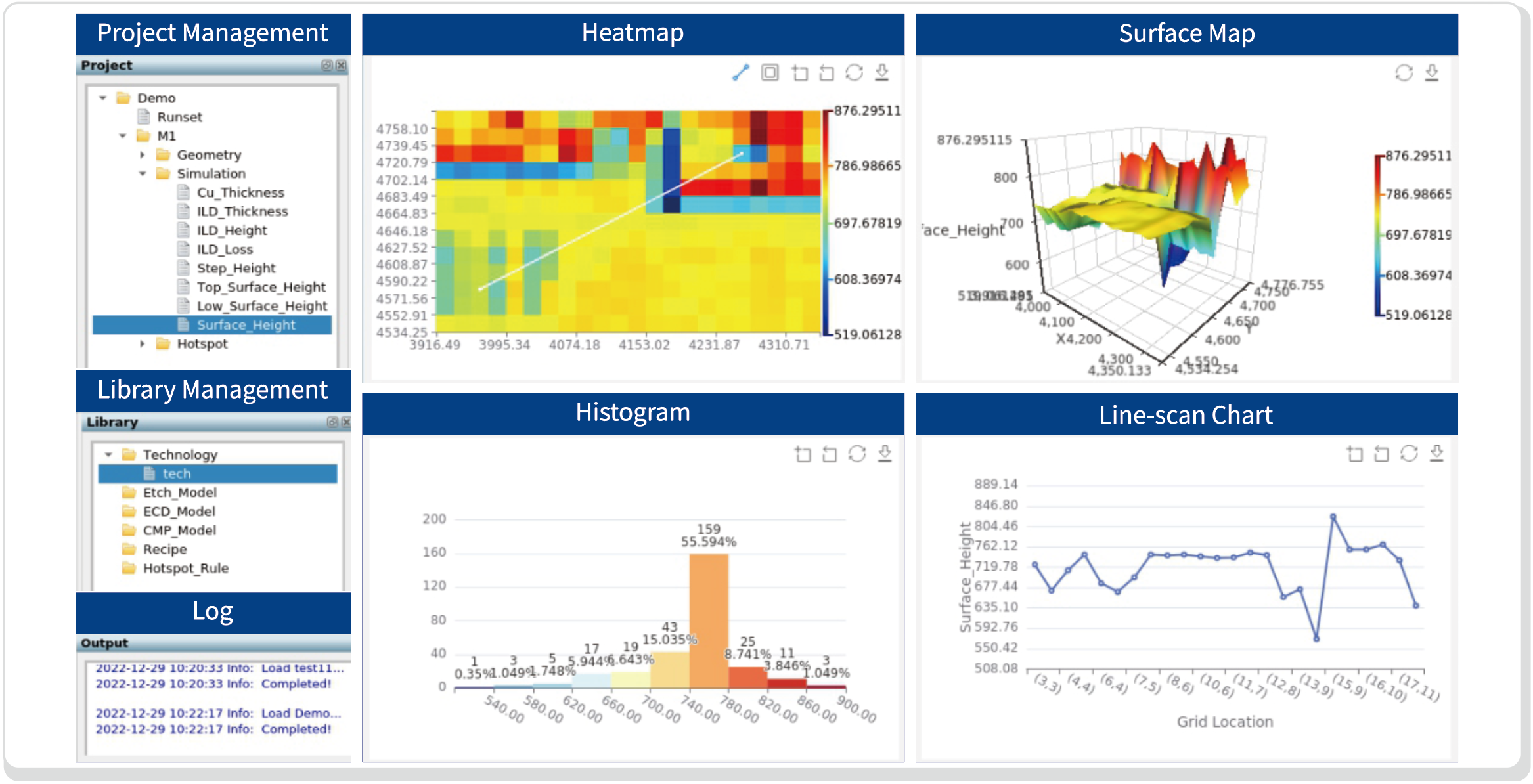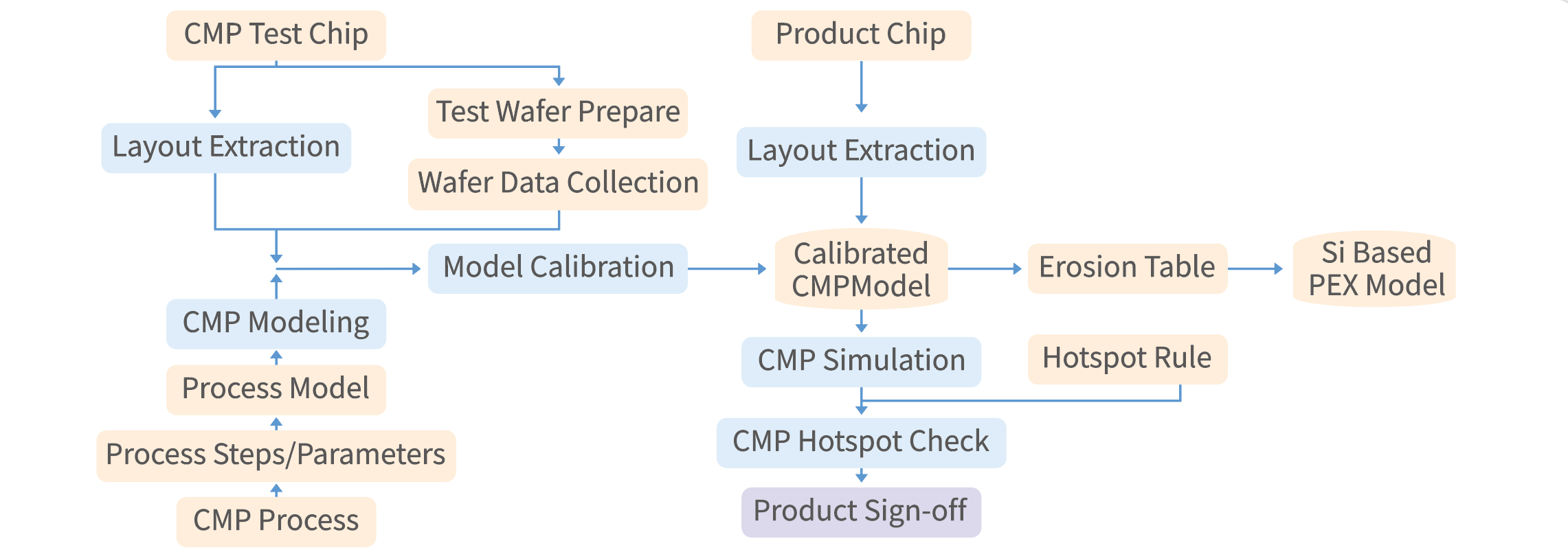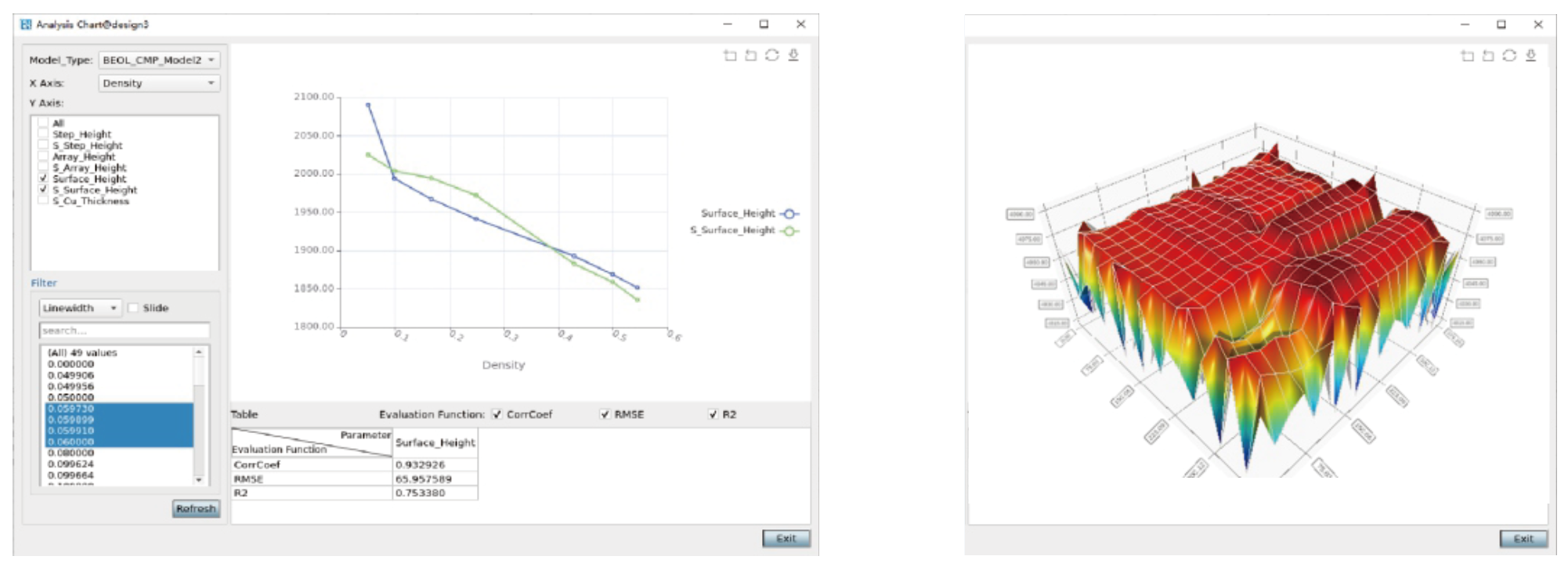Main Features
- Extraction of geometry features from a grid-based collection
- Simulation and analysis of CMP models
- Detection and localization of CMP hotspots
- Support for physical and machine learning models
- Definition of process recipes and automatic model calibration (Etching, ECD, and CMP)
- Adoption of an efficient distributed parallel computing architecture, which significantly improves model calibration and simulation efficiency. Usage of various visualizations such as data tables, scatter plots, line charts, bar charts, heatmaps, and 3D plots to display model calibration, simulation, and hotspot detection results
- Generation of CMP hotspot report






